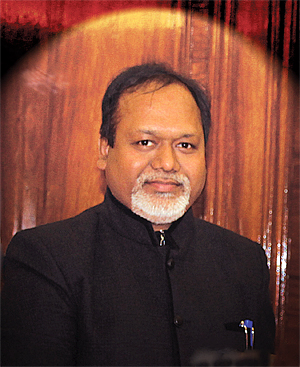INDIAN ARMED FORCES CHIEFS ON
OUR RELENTLESS AND FOCUSED PUBLISHING EFFORTS

SP Guide Publications puts forth a well compiled articulation of issues, pursuits and accomplishments of the Indian Army, over the years

I am confident that SP Guide Publications would continue to inform, inspire and influence.

My compliments to SP Guide Publications for informative and credible reportage on contemporary aerospace issues over the past six decades.
A Word from Editor-in-Chief
Irrespective of any political repercussions, we have no choice but to look at as to how we can arrest this seemingly most scary depleting scenario of the fighter squadrons. Our nation’s security remains paramount. No compromises whatsoever, on this front, with any kind of excuses are acceptable.

Indian Air Force (IAF), since the very induction of Mirage 2000s in ‘80s has been quite impressed with the quality not only of the fighter jet itself, but also the service (after sales) they have been receiving from the OEM - Dassault Aviation in this case. Time and again IAF has conveyed the level of happiness and the joy their pilots had while flying the Mirage 2000s. With this in view, one believes that the upcoming 36 Rafale will indeed be a boon to the drastically dwindling scenario fighter squadrons of the IAF. Rafale, a far more improved version and an extension of the Mirage family, equipped with latest generation avionics, armaments, radars, etc. will prove to be an incredibly versatile military machine for India.
Having said that, we must keep in mind that while IAF remains left with 31 squadrons at this point of time, even with 36 Rafale inducted by 2022 and a few more squadrons of Su-30MKI coming in, the situation will persistently remain grim as the total number of fighter squadrons will get further reduced to around 27 (with a few existing squadrons phased out during this period) by around 2025, posing a very strong question on the much needed preparedness of the IAF.
We must look at this critical scenario with discreet understanding. The possibility of the indigenously produced Light Combat Aircraft (LCA) Tejas Mk I and IA alleviating the current woes of the IAF is very remote. Therefore, the ‘Make in India’ programme of 114 fighters needs to be paced up by the Government of India and the numbers should rather be raised to at the least 200, if not more. Also, the programme should be fasttracked. Irrespective of any political repercussions, we have no choice but to look at as to how we can arrest this seemingly most scary depleting scenario of the fighter squadrons. Our nation’s security remains paramount. No compromises whatsoever, on this front, with any kind of excuses are acceptable.
For our policy makers and our decision makers, we wonder if they are noting the developments taking place around the world changing the dimensions of security equations and the technologies moving beyond the expected limitations.
combat platform that has been in the news on the global front is the F-35 Lightening II, a fifth generation fighter aircraft developed in US. Massive acquisition plans globally of this 5th Gen fighter are remarkable. We have made a brief attempt to cover this development. Some very important factors emerge when we go through the way the F-35 is making strides in the world, which are the increasingly massive pace of production per year, incredible level of pricing and time line of technology validity.
To ride the strong tailwinds in global aviation and pave the way forward for the sector, the Indian Ministry of Civil Aviation organised a Global Aviation Summit with a theme “Flying for all - especially the next 6 Billion” on 15-16 January, 2019 in Mumbai, the financial capital of India. The Summit hosted policy makers, leaders and delegates from various governments along with experts and CEOs from global aviation fraternity and provided a platform to the stakeholders to brainstorm over the future of aviation industry and identify the growth areas. The event has witnessed unveiling of various policies and a vision document for 2040. We have a detailed report on the event in this issue.
All this and more in this issue of SP’s Aviation. Welcome aboard and wish you happy landings!
Jai Hind!





